#hydroponics
Text

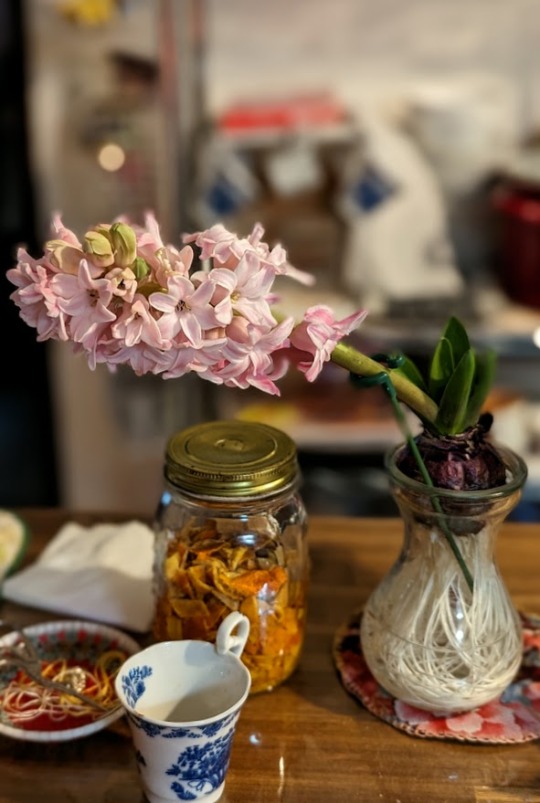

水栽培のヒヤシンスが開花しました❣️
あっという間に満開はいいけど、花茎の重さでかなり傾いた状態に…😅
しかしその後、葉の付け根にもう一つの花茎を発見。これは❣️2度楽しめそうです 😉
101 notes
·
View notes
Text
happy science ✨️🔬🔭🧘♀️✨️
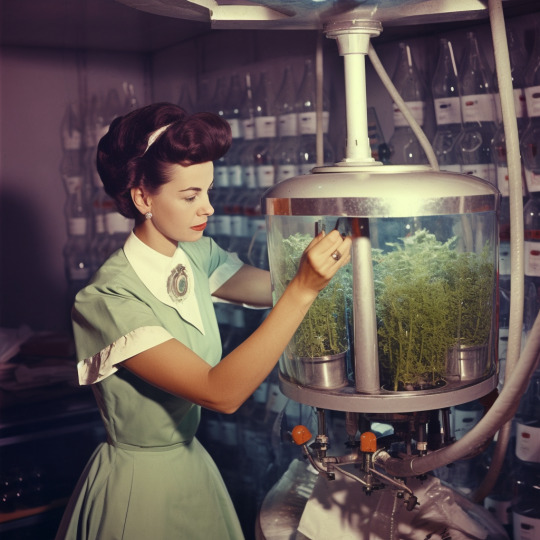
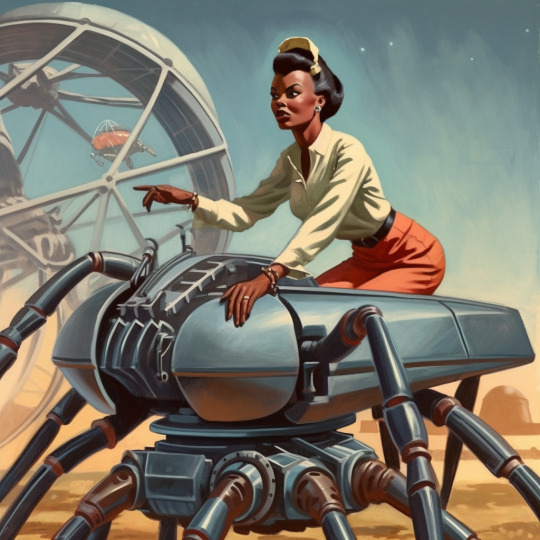
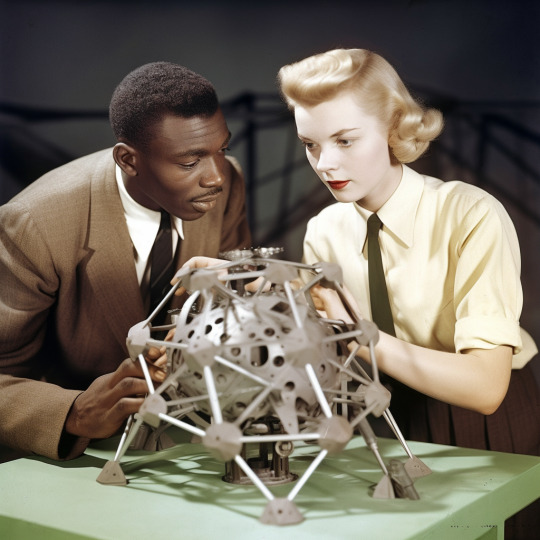
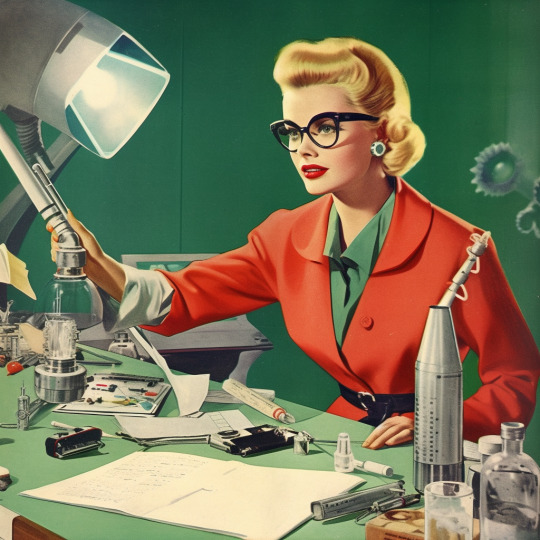

#artificial intelligence#midjourney#ai art#futurism#scifi#space#retrofuturism#retro scifi#america#USA#1950s#1960s#the jetsons#science#hydroponics#astronaut#engineering#electronics#technology#technomancer#earth#hexapod#creation#a new earth#a new tomorrow#timeline
178 notes
·
View notes
Text
Obsessed with this response as to why we don’t grow wine grapes with hydroponics

#the vine NEEDS to be in fear#THE SUFFERING makes it sweeter…#wine#hydroponics#grapes#quora#memes#random#some snooty ass wine critic is going to go#ah yes I can tell this wine of amateurish quality#why?#because I can’t taste any of THE FEAR#I WANT TO SATISFY MY SADISTIC TENDENCIES DRINKING THIS YOU CRETIN#maybe this is why villains love wine so much
124 notes
·
View notes
Text
GUESS WHO GOT A HYDROPONICS SYSTEM!!
I'm gonna be the talk of the town now!
42 notes
·
View notes
Text

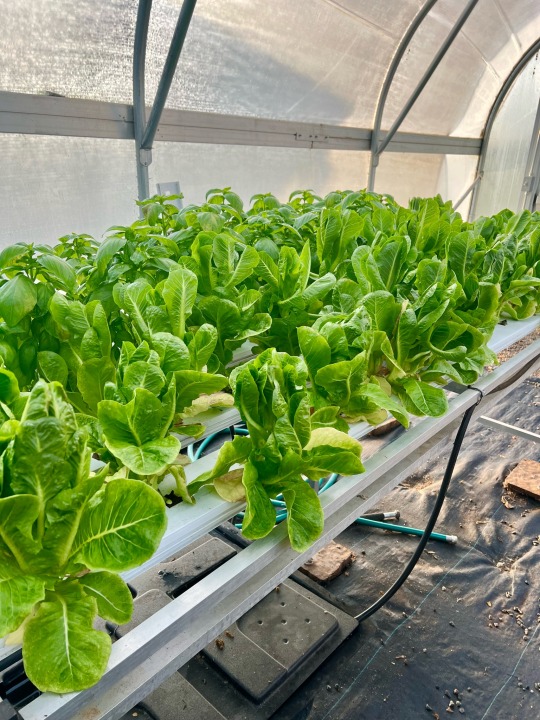
9/19/23 ~ Hydroponics at school. Those cucumbers grew super fast 😳 and some Romaine Lettuce!
#indoor garden#container gardening#sustainable gardening#vegetable gardening#starting seeds#grow organic#grow your own food#organic gardening#tomato garden#green witch#greenhouse#greenhouse nursery#plant nursery#hydroponics#growing cucumbers#romaine lettuce#sustainable agriculture
56 notes
·
View notes
Text
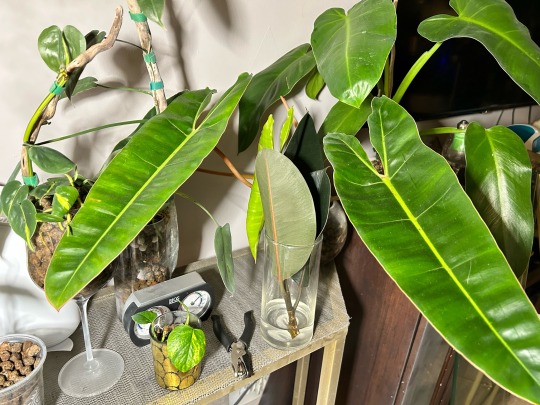

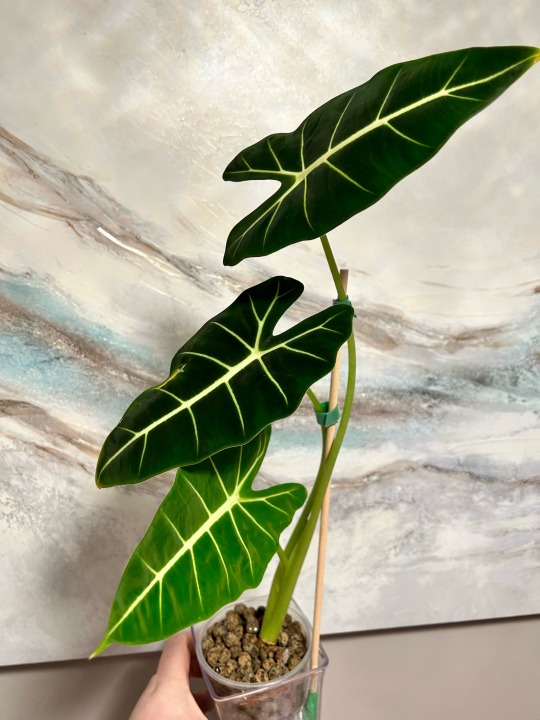
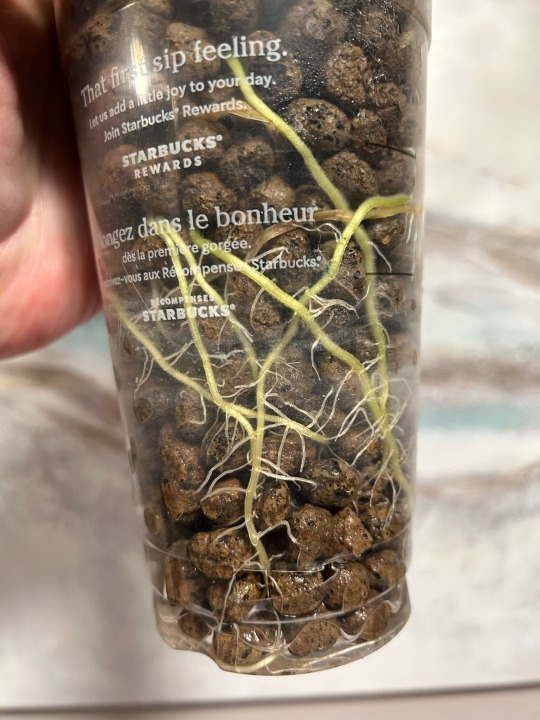



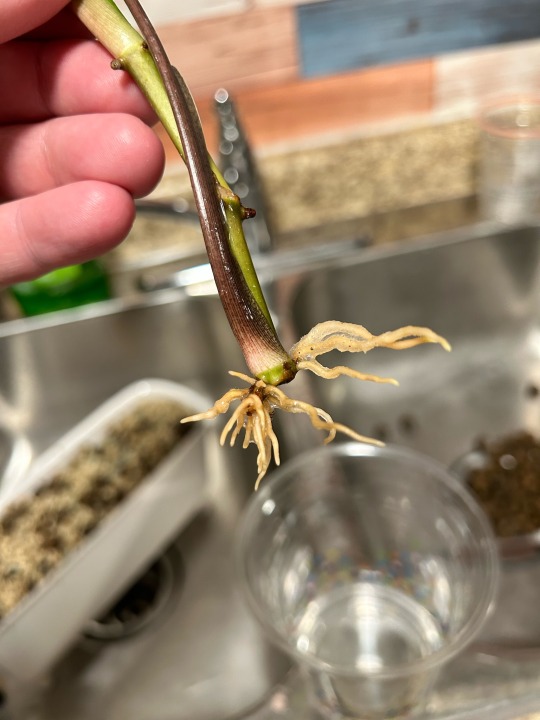

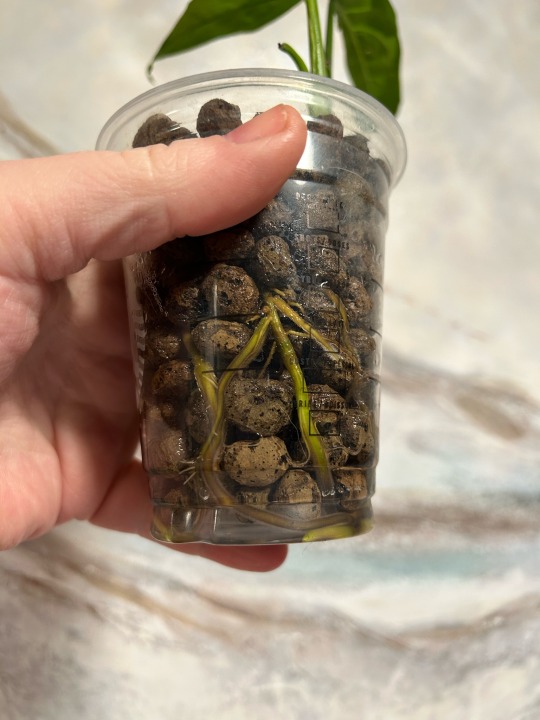
I grow my houseplants in a semi hydro setup, in LECA.
This type of post is lovingly called root porn in the semi hydro community XD
Philodendron Billietiae, Alocasia Frydek, Syngonium Albo, and 2 separate Syngonium Mojitos however one has lost it’s variegation. )’:
Part 2 after the jump.
#plants#houseplants#LECA#roots love#roots reggae#plantlover#plant photography#house plant#plant mom#plantlife#plantblr#plant obsessions#plantcore#syngonium#philodendron#philoblr#lechuza#hydroponics#albo#mojito
205 notes
·
View notes
Text
Ok fellas, I’m hooked on solarpunk and eco-socialism and green energy
Like a sponge consuming knowledge on multiple topics rn, and there’s still things that I don’t understand or haven’t seen solutions for.
Hydrophobic farms seems like a nice addition to house, but there’s problems with such farming in flats and it is noise, compressors are noisy!
Living in a small flat make compressor noise a big problem, for me at least.
Another thing that have bothered me is solarpunk solution for living in cold environments, is there any? How do we produce energy? More questions.
I’ve just started learning about this stuff so I beg to educate me on things, and of course, I want discussions!
22 notes
·
View notes
Text

For real, I am never going back, fishtank hydroponics is absolute game changer
28 notes
·
View notes
Text
Paupers Prince 6 Part 19
Please see #paupersprince6 for previous and future updates~
When you're an autistic prince, you can turn a hyper fixation into something actually helpful for your kingdom!
(I remember doing too much research for this one page, in which I needed to find out whether hydroponics could have hypothetically existed in the 18th century lol)


#paupersprince6#webcomic#webtoon#comic#regencycore#comic art#comic update#webcomic update#comics#webcomics#art#costume drama#costume#historical drama#regency drama#regency romance#fantasy comic#hydroponics
23 notes
·
View notes
Text
Closing Loops in Soilless Gardening - Hydroponics and Aquaponics
What is the future of food production going to look like? Is the projected 10 billion people in 25 years, out of which two thirds will live in cities, going to require us to convert every square meter of arable land into intensive mono cultural farms? Please don't let that be true! There HAS to be some alternative. Fortunately, there are several. Two of them are different ways of growing plants without soil, a radically new method, which may be most appealing to urban food production.

image source
Hydroponics: Growing Plants in Water
When it comes to growing large amounts of food on a small area efficiently, hydroponic systems are often brought up as a solution. And the reasons sound pretty convincing: An efficient hydroponic farm uses 90% less water, and can yield 3-10 times the amount of produce per area, with 7-14 growth cycles in a year. IMPRESSIVE! But before getting too excited, let's not forget: the devil is in the details! It's worth looking into under exactly what conditions those plants grow, being fed by what light, and most importantly which nutrients, and where they come from.
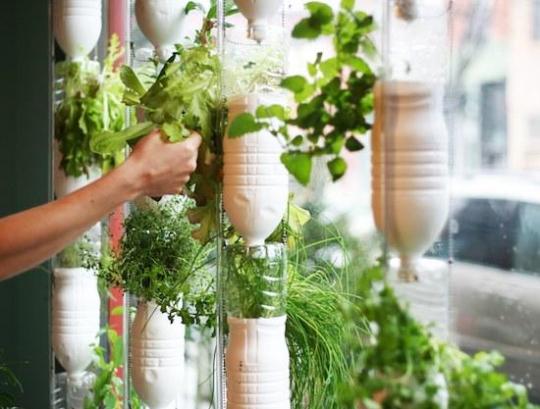
image source
The basic concept, however, of growing plants vertically, in mostly water, with some kind of substrate, such as clay balls or vermiculite, is actually a pretty nifty way to grow food where there are no fields. The most basic form of this may be the Windowfarm technique, which I experimented with myself years ago in my Budapest apartment. Going to Shanghai, the whole idea seems to be taken to a whole new level.
https://static.dezeen.com/uploads/2017/04/sunqiao-urban-agricultural-district-Sasaki-architecture-industrial-china-shanghai_dezeen_hero-b.jpg
image source
Is That Really Sustainable? Or Even Healthy?
… not to mention, does hydroponics even fit into Permaculture? Because let's be honest: with a system that needs to be constantly managed and monitored you could not be further from a self-supporting ecosystem. Also, what exactly do those plants get to eat? The typical N-P-K made industrially out of petrochemicals? Most likely. So while it certainly reduces the transport related drawbacks, hydroponics is by no means energy efficient, and the nutritional value won't be any better than your most industrially grown veggies.

image source
How Does Aquaponics Compare?
Okay, so let's bring in the fish! For those not familiar with the difference between the two systems, aquaponics is the combination of hydroponics and aquaculture, which are simply fish farms. Having fish in a tank, they will naturally defecate into the water, requiring it to be changed regularly. Plants, however love to eat those nutrients that the fish excrete. Or to be more exact, they feed on the nutrients that have been converted by bacteria and other microbes. The ammonia will turn in to nitrites, which in turn become nitrates, that is food for the plants.
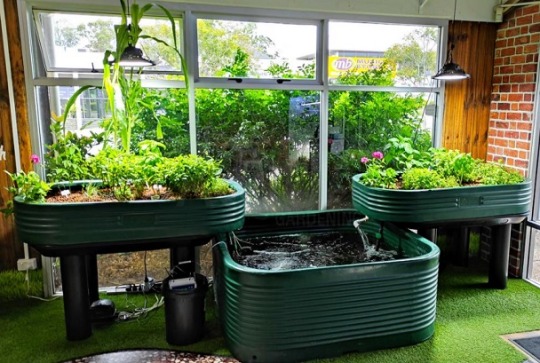
image source
So running the water from the fish through the plants growing substrate will on one hand feed the plants, as well as clean it for the fish to enjoy it again. So the system already closed a few loops there, making it more sustainable than just mere hydroponics. Also, the inclusion of microbes already offers a more diverse environment, bringing the system a bit closer to an ecosystem. But let's not get ahead of ourselves: Aquaponic systems still need close monitoring, as they are still a far cry from a self sustaining ecosystem of let's say a pond. Also, the water circulation / aeration is most likely going to require a pump, and depending on the exact setup of the system, maybe artificial lighting for the plants. All these aspects add to the energy requirement of the aquaponic system.
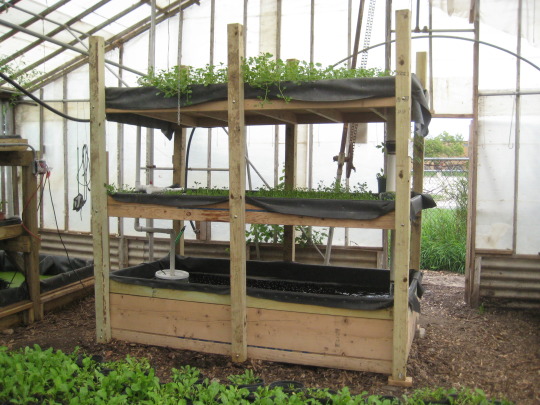
image source
A Truly Closed Loop? Consider the Food of the Fish!
When praising the sustainability of aquaponics, one thing that mustn't be ignored is the source of the fish food. Just like with the hydroponic systems, where the food for the plants or the fertilizer is considered, we can't ignore the feed we give to our fish to eat. If it is the same industrial feed, we may as well have kept to our hydroponics. Not true, since including fish already makes our system more diverse. So instead, let's continue in that same direction. What do fish eat? What is good for them? How can we grow that food ourselves?

image source
Making Your Own Sustainable Fish Food
Here I could probably start a number of individual posts, since talking about fish food is like opening up a can of worms. But fortunately, I already have a number of appropriate things written. Talking about worms, by the way, anyone who has been fishing knows that they are a favored delicacy, and anyone who composts will have no shortage of them. Since worms are mostly vegetarians, and many of us eat meat, it may have been a bit difficult to properly compost greasy, meaty, bony food wastes. That's where black soldier flies come in, whose larvae are also frequently mentioned for fish food. I still need to try growing those guys. As for green plants for the fish, duckweed makes also good fish feed, again something I have no experience with. What I do know, though, is spirulina, which is also super rich in nutrients, and I would be surprised if the fish didn't like it. So I can see throwing some composting worms, black soldier fly larvae, and spirulina into a blender, to make some great nutritious fish food. At the moment this is very theoretical for me, though.

image source
Don't Give Up the Soil Completely
So does this mean we should all focus on setting up our most sustainable fish-plant-compost combo cycles? Hells yeah! But please not at the expense of everything else! Soilless gardening, as exciting and revolutionary as it may sound, is still that: without soil. And let's face it: neither us, nor our beans and tomatoes, have evolved to live entirely without soil. That just seems wrong. Even in a small urban apartment it's worth having a bit of soil on your roof, balcony, or window sill, where you can dig your hands into a world of healthy microbial diversity on occasion. And if you do have the space, by all means, set up a pond, a dam, or another aquatic ecosystem, where fish, and frogs, and dragonflies, and numerous other species can live together without relying on our management. Apart from looking pretty, they will also provide food for us, that is nutritionally superior to anything industrially grown.
Sources: 1, 2, 3, 4, 5, 6, 7, 8
115 notes
·
View notes
Text


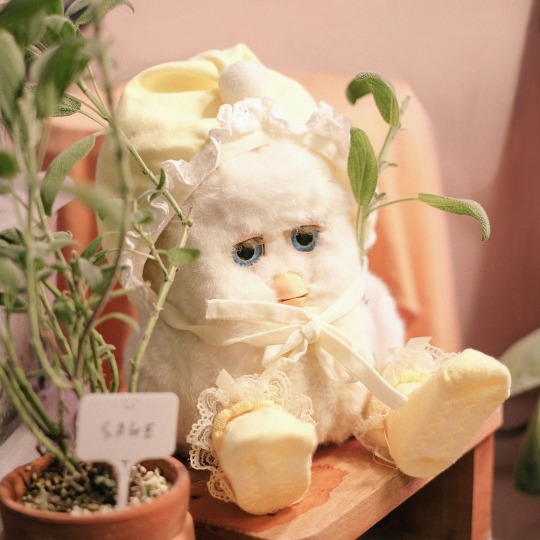
kidney gurl in our hydroponics garden. 🌱 she loves pollinating flowers and harvesting herbs. we love the smell of sage. we’d love to burn some someday.
81 notes
·
View notes
Text

HYDROPONICS FUCKERS
13 notes
·
View notes
Text


65 notes
·
View notes
Text

Hydroponic grown, auto flower from royal queen seeds
8 notes
·
View notes
Text
5th harvest and update on the indoor hydroponic tomatoes 🍅 determinate/indeterminate
15 notes
·
View notes